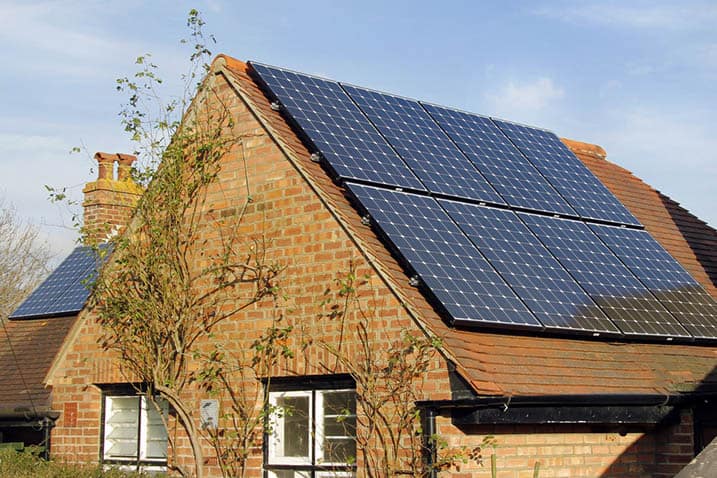How the Automatic Shut Off Switch Works

When people think of installing solar, they envision complete independence from the grid. However, this is usually the exception of solar installation,s not the rule.
Since solar arrays themselves aren’t able to store energy, other options need exploring. Battery backup would be ideal, but for many, whole-home energy storage isn’t a financial option. This is why most individuals that get solar are still connected to the grid.
Staying connected to the grid allows customers to send excess energy back on to the grid and extract it from the grid when solar panels can’t cover all the necessary production of electricity themselves. However, when the power grid is down everything connected to it doesn’t stay turned on.
Solar Power During an Outage
It would make sense for a solar array to continue running during a daytime power outage. However, this isn’t what happens, and for good reason. It is against metropolitan and municipal fire code for solar systems connected to the grid to stay turned on when the grid is down, which demands the need for a rapid shut down mechanism in solar panels.
Rapid Shutdown Requirements
This requirement is called a rapid shutdown. It shuts down the solar array as soon as it detects that the grid in the area is down.
Rapid shut down stops power from going onto the grid. This helps prevent linemen from getting hurt while trying to fix power-line issues. The problem is that rapid shutdown also shuts off power to the house.
Rapid Shutdown Solutions
The rapid shutdown switch is normally on the inverter. Go Solar Group uses the SolarEdge inverter.
Rapid Shutdown: SolarEdge
The SolarEdge is a commonly used solar inverter. It will also disconnect from the solar modules if it detects that the grid is down.
However, if it needs to be manually turned off for any reason, there is a mechanism to allow that. Start off by turning the inverter on/off switch at the bottom to the off position.
Once the voltage has gone down below 50 volts of direct current (DC) turn off the DC safety switch. Once this is completed the alternating current (AC) can be turned off.
Rapid Shutdown Requirements Effective January 2019
As of January 2019, the requirements for rapid shutdown received an update. It is now a requirement to adhere to NEC 2017 instead of NEC 2014. This new regulation requires a module-level shutdown.
All conductors within a foot of an array now have to reduce to 80 volts in fewer than 30 seconds. This is to increase the safety of firefighters should they have to enter a home through the roof.
New Requirements’ Effect on Future Inverter Shut Off Switch
Before this change was put into effect, inverters could cut off power at the inverter. The solar panels, however, were still creating a current.
Inverter companies, such as SolarEdge, are updating their products to decrease potential risk. This, however, makes it more difficult to power a home during an outage.
Future Power in an Emergency
Home backup batteries can avert this crisis. They allow individuals to store power for later. This means that although the power may be out in the neighborhood, it doesn’t have to be out in the home with solar.
Go Solar Group has several affordable backup solutions. These batteries and other backup solutions give individuals the ability to choose how much backup they can afford.



Send a Message
Oops! We could not locate your form.